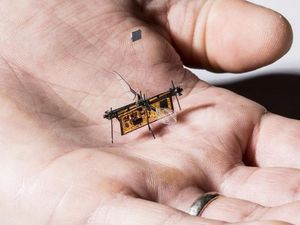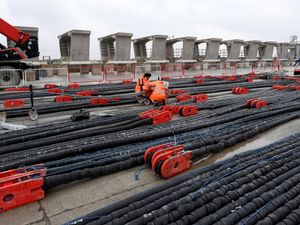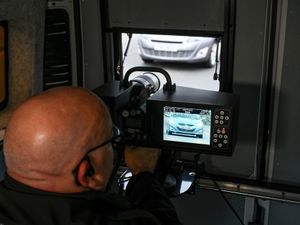This insect-sized wireless robot flies with help of lasers
At present RoboFly can take off and land but researchers hope they will soon be able to control navigation.

A tiny, insect-like robot that operates without the need for an external power source has been developed by scientists.
Called RoboFly, the gadget is powered by a laser that activates an on-board circuit to flap its wings.
The researchers say bots like it could help with tasks like inspecting crops or detecting gas leaks.
Dr Sawyer Fuller, assistant professor at the University of Washington’s Department of Mechanical Engineering and co-author of the study, said: “Before now, the concept of wireless insect-sized flying robots was science fiction.
The bot, which resembles a dragonfly, is described as “slightly heavier than a toothpick” and “larger than a real fly”.
It uses an invisible laser beam that points towards a photovoltaic cell, converting the light energy from the laser into electricity.
The new invention appears to be an upgrade from Dr Fuller and his team’s previous prototype gadget called the RoboBee, which had to be tethered to its power source with wires.

Dr Shyam Gollakota, an associate professor at the University of Washington’s Paul G Allen School of Computer Science & Engineering, said: “It was the most efficient way to quickly transmit a lot of power to RoboFly without adding much weight.”
The engineering team also added a “brain” to the bot in the form of a tiny microcontroller that sends voltage in waves to mimic the fluttering of a real insect’s wings.
Vikram Iyer, a doctoral student in the University of Washington’s Department of Electrical Engineering, said: “The microcontroller acts like a real fly’s brain telling wing muscles when to fire.

Although RoboFly can only take off and land at the moment, the team hopes it will soon be able to control the robot’s navigation and complete tasks in areas where drones are too big to be deployed.
Dr Fuller said: “I’d really like to make one that finds methane leaks.
“You could buy a suitcase full of them, open it up, and they would fly around your building looking for plumes of gas coming out of leaky pipes.

“This is inspired by real flies, which are really good at flying around looking for smelly things.
“So we think this is a good application for our RoboFly.”
The findings are being presented at the International Conference on Robotics and Automation in Brisbane, Australia.





